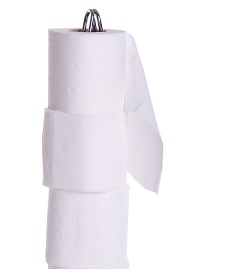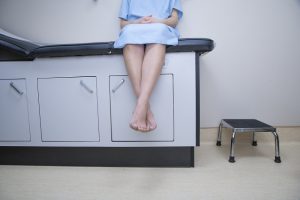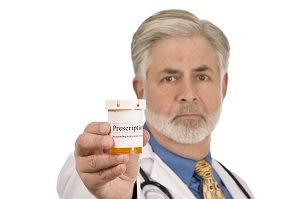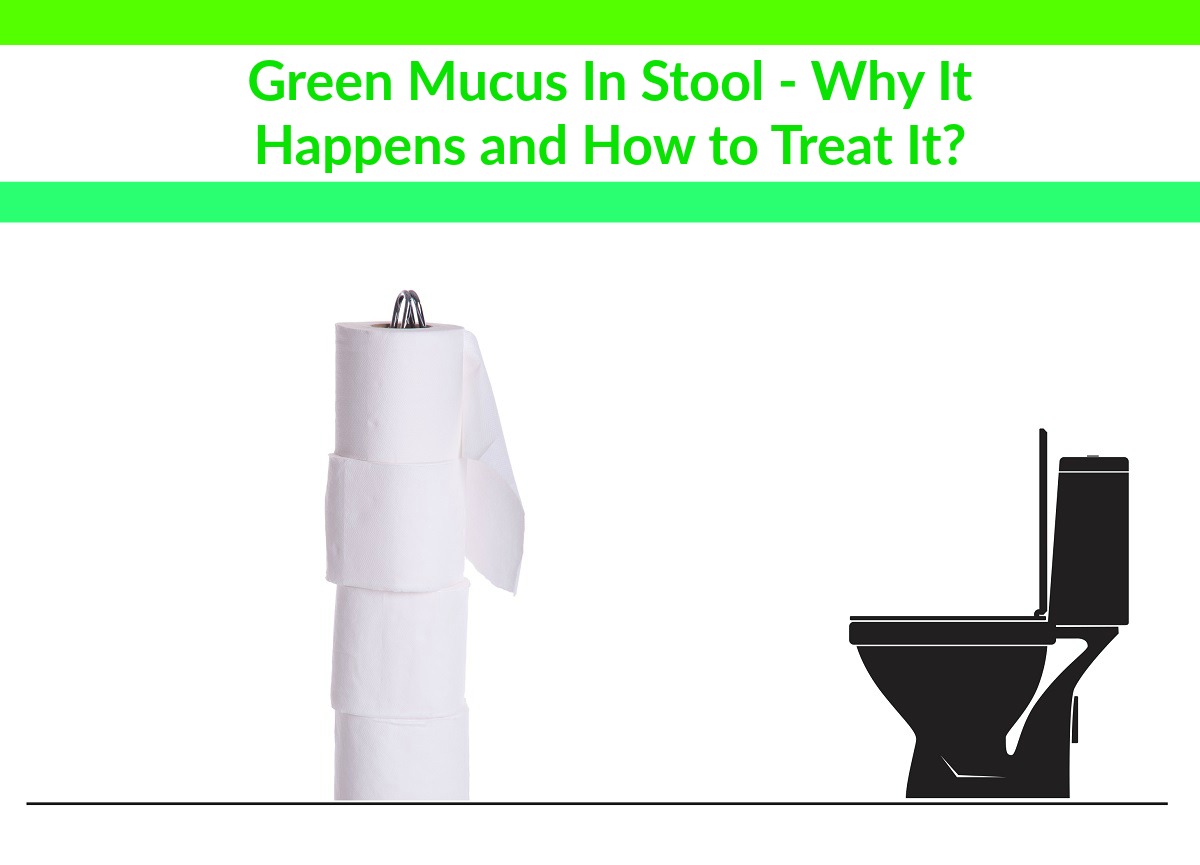If you are a parent or you have experience babysitting infants, you already know all too well how important stool checks can be.
While variances are normal and often occur frequently, a stool is still one of the most important visual cues you have that something may be amiss. As well, greenish stool is relatively common in infants, as Mucus Color points out.(1)
While it is easy enough to forget as you grow up, the same actually holds true for adults as well.
Diarrhea, constipation, blood, mucus, odor and color changes can all serve as a type of diagnostic gold for determining what types of health issues you are struggling with.
Yet it is not the easiest or most pleasant of topics, so there is always a tendency to overlook this important warning sign. In this article, learn what it means to find green mucus in your stool, the major reasons this happens and how it can be treated.
Causes for Green Mucus in Stool
Mucus is a thick, gelatinous and typically clear substance the body produces and uses as a type of lubricant and protective agent to guard against acids, toxins, germs and bacteria, among other things.
Generally, normal human mucus can range from clear-colored to white or slightly yellowish.
What many people don’t realize is that mucus itself is a normal component in stool, as Healthline reports.(2) In fact, a normal body can produce more than a quart of mucus each day to use as needed throughout the system.
But when the body begins to produce more mucus than normal and/or the color of that mucus changes, this can be an indication of a possible health issue cropping up.
There are a number of possible causes for the presence of green-colored mucus in particular in your stools.
Here are the major possible causes:
» Immune system response to infection. Mucus is being used to break down toxins or bacteria somewhere in the body, which are then being excreted out of the body through the stool, according to the National Institutes of Health (NIH).(3)
» Irritable bowel syndrome (IBS). IBS can produce color changes in mucus as the disease moves from diarrhea to constipation to cramping and back again. All of this can cause a backup of mucus in the colon and cause color changes.
» Gastroenteritis. Whether bacterial, parasitic, fungal or viral, contracting gastroenteritis can cause mucus to turn green and also change its odor, according to North Carolina State University (NCSU).(4)
» Ulcers or fissures in the anal area. When an ulcer or fissure forms, there is a tearing of the tissues inside the rectum. A number of reasons can trigger an ulcer or a fissure, but one of the warning signs can be a change in the amount or color of the mucus in the stool.
» Bowel obstruction. If there is a situation where the bowel actually becomes partially or completely obstructed, it could mean that the stool itself has gotten too dense and compacted to pass. It could also indicate a hernia or the presence of a tumor or adhesions from a previous surgery. In these cases, mucus may pass, and it could be green or thicker.
» Liver issues. The liver produces bile, a greenish colored substance designed to break down fats so the body can use them as energy. When there are digestive disturbances that cause the food to move through faster than usual, this can result in the greenish bile coming out in the mucus that surrounds the stool.
» Cancer. Cancer in the colon or rectum can result in mucus increase plus changes in color and odor.
» Food allergies. Sometimes the cause of green mucus in the stool is as simple as allergies. It could be an allergy in the environment, such as pollen or toxins, or it could be a food allergy.
» Diet. An even simpler possible cause for green colored mucus in the stool could be what you are eating. For example, dark green leafy vegetables and algae supplements can definitely cause the mucus to change color on account of the high amounts of chlorophyll present in each, according to the Global Healing Center.(5)
Symptoms
 Since many people are not aware that mucus is always present to some degree in the stool, when the mucus suddenly turns greenish in color, it can bring up a lot of anxiety.
Since many people are not aware that mucus is always present to some degree in the stool, when the mucus suddenly turns greenish in color, it can bring up a lot of anxiety.
But what is most important to remember is that the color change is just an indication that something has changed. It could be something serious, but it could also be just a temporary environmental issue, such as your immune system fighting off allergens during hay fever season.
The main symptom here, of course, is the greenish mucus itself. But it is the presence of additional new symptoms, or symptoms you have had that get worse, that can most help your doctor with diagnosing what is causing the green color.
As Medical News Today reports, here is a list of the most common symptoms that can co-occur with green mucus in your stools:(6)
» Bloating.
» Cramping.
» Constipation.
» Diarrhea.
» Pain or pressure in the stomach, abdomen or rectum.
» Nausea.
» Vomiting.
» Fever or chills.
» Skin rashes or hives.
» Feelings of urgency to have a bowel movement.
» Passing only mucus.
» Blood or pus that appears in the stool.
» Changes in color or consistency of the stool itself.
» Gas.
» Respiratory issues (sneezing/coughing, runny nose, sore throat, et al).
Diagnosing Green Mucus in Stool
 According to the Mayo Clinic, when the mucus in your stool changes color, increases in volume, changes consistency or becomes odorous, it is time to talk with your doctor to figure out why this is happening.(7)
According to the Mayo Clinic, when the mucus in your stool changes color, increases in volume, changes consistency or becomes odorous, it is time to talk with your doctor to figure out why this is happening.(7)
Here, it can help if you keep a “stool log” to note down what is going on when you have bowel movements.
Health Grades states that, by making note of what you ate and drank, how much stool you passed, its color and consistency, any odor, the mucus color and whether you had any difficulty or pain, you can spot any patterns that can help you and your doctor identify what is causing your problems.(8)
The first step in diagnosing why the mucus in your stool has turned green is for your doctor to take a complete medical history for both you and close relatives. This may highlight bowel issues in family members that you may also be at risk to develop.
It can also help to pinpoint if you have recently taken any trips where you might have contracted parasites or bacteria, or if you have recently had any major lifestyle changes, such as adding new foods to your diet.
Your doctor will do an examination, but then will likely refer you to a specialist for additional testing and examination. Often, you will see a gastroenterologist next. A gastroenterologist is a specialist for issues of the liver and digestive tract.
These tests may be ordered:
• CBC (complete blood count) and blood chemistry profile. This blood test takes a comprehensive look at your blood profile, nothing any imbalances or abnormalities that could point to a more serious condition.
• Colonoscopy. During a colonoscopy, you are sedated while the specialist examines the entire length of your colon and lower intestine using special equipment. the goal is to check for polyps, tumors or disease.
• Endoscopy. If your doctor thinks that a specific organ or system may be damaged, an endoscopy permits them to look at that area with a small camera.
• Sweat electrolyte test. This test measures for serious diseases that can impact your body’s fluid production.
• Urine and stool tests. These tests look for the presence of bacteria, fungi or parasites.
Treatment
 The recommended treatment approach will vary based on what your final diagnosis may be. However, according to Healthy Focus, there are some treatments that may be universally applied, including these:(9)
The recommended treatment approach will vary based on what your final diagnosis may be. However, according to Healthy Focus, there are some treatments that may be universally applied, including these:(9)
» Adding more healthy probiotics to your diet.(check price on Amazon)
» Eating foods high in natural anti-inflammatories.
» Drinking more water.
» Increasing the amount of fiber in your diet.
As well, these additional treatments may be recommended:
» Medication. To support easier passage of stools and ease cramping or bloating. Medication may also be prescribed to treat more serious conditions such as IBS, Crohn’s disease or bacterial infections.
» Surgery. To remove a polyp, bowel obstruction, tumor or diseased tissue.
Conclusion
If you are suffering from green mucus in your stool, the most important thing is not to panic.
Instead, follow these steps:
• Keep a stool log.
• Make an appointment with your doctor.
• Go through the testing process.
• Follow the recommended treatment.
Further reading:
References
(1)”mucuscolor.com/green-mucus-in-stool-in-adults-something-to-worry-about/
(2)”healthline.com/health/mucus-in-stool#Overview1
(3)”ncbi.nlm.nih.gov/pmc/articles/PMC2776855/
(4)”ece.ncsu.edu/imaging/MedImg/SIMS/GE2_1.html
(5)”globalhealingcenter.com/natural-health/what-does-stool-color-mean/
(6)”medicalnewstoday.com/articles/310101.php
(7)”mayoclinic.org/mucus-in-stool/expert-answers/faq-20058262
(8)”healthgrades.com/right-care/digestive-health/mucus-in-stool–causes
(9)”healthyfocus.org/mucus-stools-stool-color-mean/
Leave Feedback: Was this article helpful?

